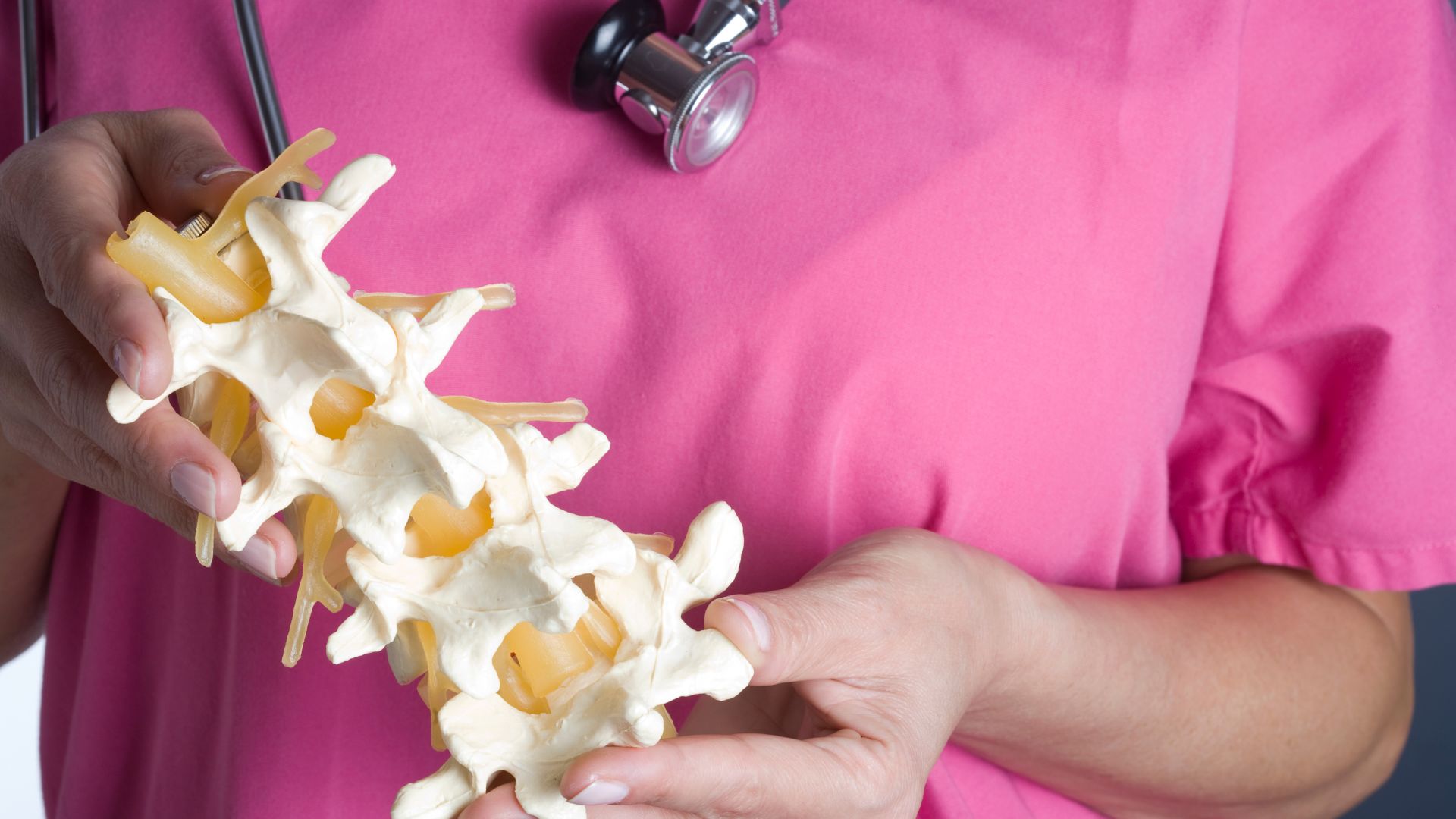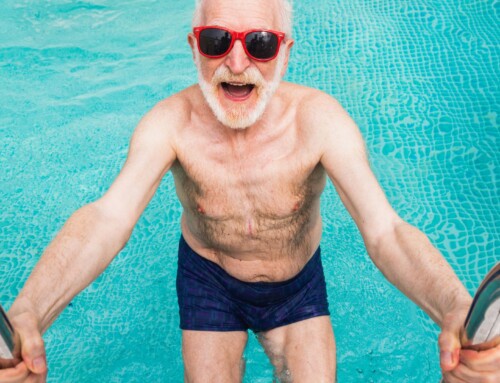Intro
Recovering from a spinal cord injury or condition can be a long and challenging journey. Many people living with chronic pain or limited mobility due to spinal cord issues may feel like they have exhausted all treatment options. However, a spinal cord stimulator, also known as a Spinal Cord Stimulator (SCS), is a device that offers hope for improved quality of life. This implantable device delivers electrical impulses to the spinal cord, helping to manage pain and improve function. But what does the recovery process look like for those who choose to undergo this procedure? In this blog post, we will discuss the recovery time for a spinal cord stimulator and what patients can expect on their road to recovery.
Understanding Recovery from a Spinal Cord Stimulator
Recovering from a spinal cord injury or condition can be a long and arduous process, but with the help of a spinal cord stimulator, individuals can find hope in the prospect of improved quality of life. A spinal cord stimulator, also known as a neurostimulator or nerve stimulator implant, is a device that is implanted in the body to deliver electrical impulses to the spinal cord, helping to manage pain and improve function.
Understanding the recovery process after receiving a spinal cord stimulator is essential for patients considering this treatment option. While each individual’s recovery journey is unique, there are some general guidelines and expectations to keep in mind.
In the immediate aftermath of the procedure, patients may experience some soreness and discomfort at the site of the implant. This is normal and can typically be managed with prescribed pain medications. It is important to follow post-operative care guidelines provided by your healthcare team to minimize the risk of infection and optimize healing.
The recovery time for a spinal cord stimulator can vary depending on several factors, including the individual’s overall health, the specific condition being treated, and the extent of the spinal cord injury. On average, patients can expect a recovery period of around 6 to 8 weeks before they can resume their regular activities. However, it is important to note that complete recovery may take longer and can be influenced by the specific needs and circumstances of each patient.
Throughout the recovery process, physiotherapy and rehabilitation play a crucial role in maximizing the benefits of the spinal cord stimulator. Working with a physical therapist can help patients regain strength, improve mobility, and develop strategies for managing their condition.
While the recovery journey can be challenging, it is important to remember that many individuals have successfully regained their quality of life with the help of a spinal cord stimulator. By following the guidelines provided by your healthcare team and staying committed to your rehabilitation program, you can optimize your chances of a successful recovery. Stay positive, stay determined, and don’t hesitate to reach out for support when needed.
The Procedure for Implanting a Spinal Cord Stimulator
Once a decision has been made to undergo a spinal cord stimulator procedure, patients can expect a step-by-step process that involves several stages. This section will guide you through the procedure for implanting a spinal cord stimulator and provide an overview of what to expect.
Before the procedure, your healthcare team will conduct a comprehensive evaluation to determine if you are a suitable candidate for a spinal cord stimulator. This evaluation may include imaging tests, such as MRI or CT scans, to assess the condition of your spine. Additionally, your healthcare team will consider your medical history, previous treatments, and overall health to ensure that a spinal cord stimulator is the best option for you.
On the day of the procedure, you will be placed under anesthesia to ensure your comfort throughout the surgery. The surgeon will then make a small incision in your back, creating a pathway to the epidural space surrounding your spinal cord. This is where the spinal cord stimulator leads will be placed. The leads are thin wires with small electrodes at the tips, which will be guided through the epidural space to reach the desired location on the spinal cord.
Once the leads are in place, the surgeon will make a small incision in the buttock or abdomen to create a pocket for the neurostimulator device. The neurostimulator is a small battery-powered device that generates the electrical impulses. It will be placed in the pocket and connected to the leads using an extension wire.
After the procedure, the incisions will be closed, and you will be taken to a recovery area to allow the anesthesia to wear off. Your healthcare team will monitor your vital signs and provide instructions for post-operative care, including wound care, pain management, and restrictions on certain activities. In some cases, you may be required to stay overnight in the hospital for observation, but many patients are able to go home on the same day.
It is important to note that every individual’s experience with the spinal cord stimulator procedure may vary, and your healthcare team will provide specific instructions tailored to your needs. By following these instructions and maintaining open communication with your healthcare team, you can ensure a smooth and successful recovery from the implantation of your spinal cord stimulator.
Post-Operative Care and Guidelines
After undergoing a spinal cord stimulator procedure, post-operative care is crucial to ensure a smooth and successful recovery. Your healthcare team will provide specific instructions tailored to your needs, but here are some general guidelines to keep in mind.
- Wound Care: It is important to keep the incision site clean and dry to prevent infection. Your healthcare team will provide instructions on how to care for the incision, including when and how to change dressings. It is essential to follow these guidelines and report any signs of infection, such as redness, swelling, or increased pain.
- Pain Management: Some soreness and discomfort at the site of the implant is normal after the procedure. Your healthcare team will prescribe pain medications to help manage any discomfort during the initial recovery period. It is important to take the medication as directed and communicate with your healthcare team if you experience inadequate pain relief or any concerning side effects.
- Activity Restrictions: Your healthcare team will provide guidelines on activities to avoid during the recovery period. It is important to follow these restrictions to allow your body to heal properly. You may be advised to avoid heavy lifting, bending, or twisting for a certain period of time. It is essential to listen to your body and not push yourself too hard too soon.
- Follow-Up Appointments: Regular follow-up appointments with your healthcare team are important to monitor your progress and ensure the spinal cord stimulator is functioning properly. These appointments may include checking the device settings, evaluating pain relief, and making any necessary adjustments.
- Emotional Support: Recovery from a spinal cord stimulator procedure can be challenging both physically and emotionally. It is important to seek support from loved ones and consider joining support groups or therapy to help cope with the emotional aspects of recovery.
Remember, each individual’s recovery journey may vary, and your healthcare team will provide personalized instructions based on your specific needs. By following these post-operative care guidelines and staying in close communication with your healthcare team, you can optimize your chances of a successful recovery and improve your quality of life with the help of a spinal cord stimulator.
Average Recovery Time for a Spinal Cord Stimulator
One of the most common questions patients have when considering a spinal cord stimulator is, “How long does it take to recover?” While every individual’s recovery journey is unique, there are some average timelines to keep in mind.
On average, the recovery time for a spinal cord stimulator is around 6 to 8 weeks before patients can resume their regular activities. However, it is important to note that this is just an estimate and can vary depending on several factors. Factors that can influence recovery time include the individual’s overall health, the specific condition being treated, and the extent of the spinal cord injury.
During the recovery period, patients may experience some soreness and discomfort at the site of the implant. This is normal and can typically be managed with prescribed pain medications. Following the post-operative care guidelines provided by your healthcare team is crucial in minimizing the risk of infection and optimizing healing.
In addition to following post-operative care guidelines, physiotherapy and rehabilitation play a crucial role in maximizing the benefits of the spinal cord stimulator. Working with a physical therapist can help patients regain strength, improve mobility, and develop strategies for managing their condition.
It is important to stay positive and determined throughout the recovery process. Remember that many individuals have successfully regained their quality of life with the help of a spinal cord stimulator. By staying committed to your rehabilitation program and seeking support when needed, you can optimize your chances of a successful recovery.
Factors Influencing Recovery Time
Factors that influence recovery time after receiving a spinal cord stimulator can vary from person to person. Understanding these factors can help patients have a realistic expectation of their recovery journey.
One of the main factors that can influence recovery time is the overall health of the individual. Patients who are in good physical health, have strong immune systems, and are free from underlying medical conditions may experience a quicker recovery compared to those who have other health concerns.
The specific condition being treated and the extent of the spinal cord injury can also impact recovery time. Those with more severe spinal cord injuries or conditions may require a longer recovery period to allow for proper healing and adjustment to the spinal cord stimulator.
Another factor to consider is the patient’s adherence to post-operative care guidelines. Following the instructions provided by the healthcare team is crucial in minimizing complications and optimizing healing. This includes proper wound care, taking prescribed medications as directed, and avoiding activities that may put strain on the implant site.
The involvement of physiotherapy and rehabilitation in the recovery process can significantly impact recovery time. Engaging in regular physical therapy sessions can help patients regain strength, improve mobility, and develop strategies for managing their condition. The consistency and dedication to these therapies can play a role in expediting the recovery process.
It is important to remember that every individual’s recovery journey is unique. Some may experience a faster recovery, while others may take longer to see improvements. Patience and perseverance are key during the recovery period.
By taking into account these factors and working closely with your healthcare team, you can better understand and navigate your own recovery timeline after receiving a spinal cord stimulator. Remember to reach out for support and ask any questions you may have along the way.
The Importance of Physiotherapy and Rehabilitation in Recovery
Physical therapy and rehabilitation are integral components of the recovery process after receiving a spinal cord stimulator. These therapies play a crucial role in maximizing the benefits of the stimulator, helping patients regain strength, improve mobility, and develop strategies for managing their condition.
Physiotherapy focuses on restoring function and improving physical abilities. A trained physiotherapist will work closely with the patient to create a personalized treatment plan that addresses their specific needs. This may include exercises to strengthen the muscles around the spinal cord, improve balance and coordination, and enhance overall mobility. The therapist may also utilize techniques such as manual therapy, stretching, and joint mobilization to alleviate pain and stiffness.
Rehabilitation goes beyond physical therapy and encompasses a holistic approach to recovery. It involves addressing the emotional and psychological aspects of living with a spinal cord injury or condition. Rehabilitation may involve counseling, support groups, and educational programs to help patients and their families navigate the challenges that come with managing chronic pain and limited mobility.
The importance of physiotherapy and rehabilitation in the recovery process cannot be overstated. These therapies not only help individuals regain physical abilities but also provide emotional support and promote a positive mindset. The guidance and expertise of trained professionals ensure that patients receive appropriate care and support throughout their recovery journey.
It is important to approach physiotherapy and rehabilitation with dedication and consistency. Adhering to the treatment plan and attending therapy sessions regularly will yield the best results. Patients should actively engage in their own recovery, practicing the exercises and techniques taught during therapy sessions to enhance progress.
Overall, physiotherapy and rehabilitation are essential components of the recovery process after receiving a spinal cord stimulator. These therapies provide patients with the tools and support they need to regain strength, improve mobility, and optimize their quality of life. With the right mindset and commitment to their treatment plan, individuals can make significant strides on their road to recovery with the help of physiotherapy and rehabilitation.
Personal Experiences and Stories of Recovery
Every person’s journey to recovery with a spinal cord stimulator is unique and filled with personal experiences and stories of resilience. These stories serve as a testament to the life-changing benefits that a spinal cord stimulator can provide.
One individual, let’s call her Sarah, had been living with chronic back pain for years. The pain made it difficult for her to perform everyday tasks and limited her mobility. Sarah decided to undergo a spinal cord stimulator procedure, hoping to find relief and regain control over her life. After the surgery, Sarah shared that she experienced a significant reduction in her pain levels. She was able to participate in activities she hadn’t been able to enjoy in years, such as walking her dog and gardening. Sarah’s story highlights the transformative power of a spinal cord stimulator in restoring quality of life.
Another individual, John, had suffered a spinal cord injury in a car accident that left him with limited mobility in his legs. After exploring various treatment options, John opted for a spinal cord stimulator to help manage his chronic pain and improve his ability to walk. Following the procedure, John embarked on a comprehensive rehabilitation program that included physiotherapy and exercise. With the help of his spinal cord stimulator and the support of his healthcare team, John gradually regained strength in his legs and relearned how to walk. Today, he is able to walk short distances without assistance and has regained a sense of independence and freedom.
These personal experiences and stories of recovery demonstrate the immense impact that a spinal cord stimulator can have on individuals’ lives. Whether it’s finding relief from chronic pain or regaining mobility and independence, the journey to recovery with a spinal cord stimulator is filled with hope and transformation. If you’re considering a spinal cord stimulator for back therapy or spinal pain management, take comfort in knowing that you’re not alone. Many individuals have successfully navigated this journey and have emerged on the other side with a renewed sense of vitality and well-being.
Life After Spinal Cord Stimulator Recovery
Once you have completed the recovery process and are on the other side of receiving a spinal cord stimulator, a new chapter of life begins. Life after spinal cord stimulator recovery is often filled with a renewed sense of hope and improved quality of life.
For many individuals, the spinal cord stimulator becomes a vital tool in managing their chronic pain and improving their overall function. It allows them to participate in activities that were once challenging or impossible. Whether it’s walking their dog, gardening, or simply enjoying a pain-free day, the spinal cord stimulator offers a newfound sense of freedom.
It is important to remember that life after spinal cord stimulator recovery may still require some adjustments and lifestyle changes. Regular follow-up appointments with your healthcare team will ensure that the stimulator is functioning optimally and that any necessary adjustments are made. This ongoing communication will help to ensure that you continue to receive the maximum benefits from your spinal cord stimulator.
Additionally, it is important to maintain a consistent routine of physiotherapy and rehabilitation exercises. This will help to maintain strength, mobility, and function in the long term. Engaging in regular physical activity and maintaining a healthy lifestyle will also contribute to overall well-being.
Life after spinal cord stimulator recovery is an opportunity for individuals to embrace their new lease on life. While there may still be challenges along the way, the spinal cord stimulator can provide a newfound sense of vitality and well-being. So, go out there and enjoy all the possibilities that await you with your spinal cord stimulator by your side.
Tips to Speed up Recovery Time
Speeding up the recovery time after receiving a spinal cord stimulator can be a goal for many patients. While the recovery process may vary for each individual, there are some tips and strategies that can help optimize healing and minimize downtime.
- Follow Post-Operative Care Guidelines: One of the most important steps in speeding up recovery is to strictly adhere to the post-operative care guidelines provided by your healthcare team. This includes proper wound care, taking prescribed medications as directed, and avoiding activities that may strain the implant site. By following these guidelines, you can minimize the risk of complications and promote faster healing.
- Engage in Physical Therapy: Physical therapy plays a crucial role in the recovery process. By working with a physiotherapist, you can develop a personalized exercise program that focuses on regaining strength, improving mobility, and managing pain. Regular physical therapy sessions can help expedite the recovery process and enhance the benefits of the spinal cord stimulator.
- Practice Healthy Lifestyle Habits: Maintaining a healthy lifestyle can also contribute to a faster recovery. This includes eating a nutritious diet, getting regular exercise (with the guidance of your healthcare team), and getting enough restful sleep. These healthy habits support overall well-being and can promote optimal healing.
- Communicate with your Healthcare Team: Open and ongoing communication with your healthcare team is essential throughout the recovery process. If you have any concerns, questions, or experience any unexpected symptoms, it is important to reach out to your healthcare team right away. They can provide guidance and make any necessary adjustments to optimize your recovery.
- Stay Positive and Engage in Support Systems: The recovery journey can be challenging, but maintaining a positive mindset and engaging in support systems can make a significant difference. Reach out to loved ones, join support groups, or consider therapy to help navigate the emotional aspects of recovery. Surrounding yourself with positivity and support can provide motivation and encouragement throughout the recovery process.
By implementing these tips and strategies, you can potentially speed up your recovery time after receiving a spinal cord stimulator. Remember to consult with your healthcare team for personalized guidance and to ensure that you are following a plan that is tailored to your specific needs. With dedication, support, and patience, you can optimize your chances of a successful recovery and enjoy the benefits of your spinal cord stimulator sooner.







